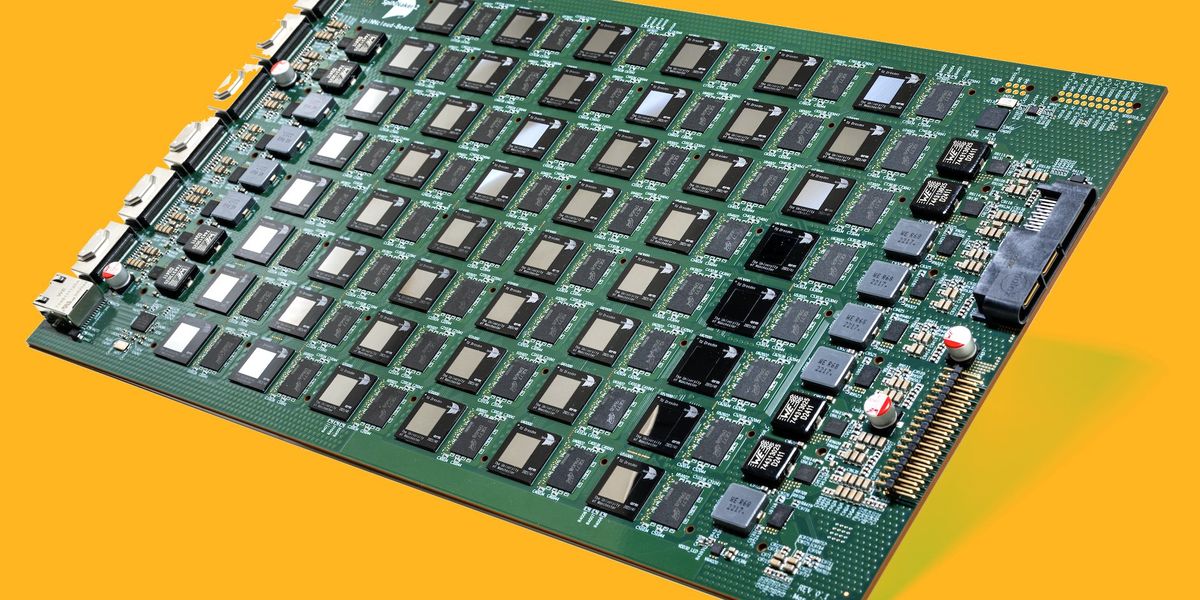

Today Dresden, Germany-based startup SpiNNcloud Systems announced that their hybrid supercomputing platform, the SpiNNaker2, is available for sale. The machine combines traditional AI accelerators with neuromorphic computing capabilities, using system design strategies that draw inspiration from the human brain. Systems for purchase vary in size, but the current largest machine can simulate ten billion neurons, about one tenth the number in the human brain. The announcement was made at the ISC High Performance conference in Hamburg, Germany.
“We’re basically trying to bridge the gap between brain inspiration and artificial systems.” —Hector Gonzalez, SpiNNcloud Systems
SpiNNcloud Systems was founded in 2021 as a spinoff of the Dresden University of Technology. Their original chip, the SpiNNaker1, was designed by Steve Furber, the principal designer of the ARM microprocessor—the technology that now powers most cell phones. The SpiNNaker1 chip is already in use by 60 research groups in 23 countries, SpiNNcloud Systems says.
Human brain as supercomputer
Brain-emulating computers hold the promise of vastly lower energy computation and better performance on certain tasks. “The human brain is the most advanced supercomputer in the universe, and it only consumes 20 watts to achieve things that artificial intelligence systems today only dream of,” says Hector Gonzalez, co-founder and co-CEO of SpiNNcloud Systems. “We’re basically trying to bridge the gap between brain inspiration and artificial systems.”
Aside from sheer size, a distinguishing feature of the SpiNNaker2 system is its flexibility. Traditionally, most neuromorphic computers emulate the brain’s spiking nature: Neurons fire off electrical spikes to communicate with the neurons around them. The actual mechanism of these spikes in the brain is quite complex, and neuromorphic hardware often implements a specific simplified model. The SpiNNaker2 can implement a broad range of such models however, as they are not hardwired into its architecture.
Instead of looking how each neuron and synapse operates in the brain and trying to emulate that from the bottom up, Gonzalez says, their approach involved implementing key performance features of the brain. “It’s more about taking a practical inspiration from the brain. And we are particularly fascinated how the brain is energy proportional and how it is simply highly parallel,” Gonzalez says.
To build hardware that is energy proportional—each piece only draws power when it’s actively in use—and highly parallel, the company started with the building blocks. The basic unit of the system is the SpiNNaker2 chip, which hosts 152 processing units. Each processing unit has an ARM-based microcontroller, and, unlike its predecessor the SpiNNaker1, also comes equipped with accelerators for use on neuromorphic models and traditional neural networks.
 The SpiNNaker2 supercomputer has been designed to model up to 10 billion neurons, about one tenth the size of the human brain. SpiNNCloud Systems
The SpiNNaker2 supercomputer has been designed to model up to 10 billion neurons, about one tenth the size of the human brain. SpiNNCloud Systems
The processing units operate in an event-based manner: they are off unless an event triggers them to turn on and operate. This enables energy proportional operation. The events are routed between units and across chips asynchronously, meaning there is no central clock coordinating their movements—which can allow for massive parallelism. Each chip is connected to six other chips, and the whole system is connected in the shape of a torus to ensure all connecting wires are equally short.
The resulting system is not only capable of emulating 10 billion neurons, but also performing 0.3 exaflops of more traditional AI training tasks, setting it on par with the top 10 largest supercomputers today.
Among the first customers of the SpiNNaker2 system is a team at Sandia National Labs, who plans to use it for further research on neuromorphic systems outperforming traditional architectures and performing otherwise inaccessible computational tasks.
“The ability to have a general programmable neuron model lets you explore some of these more complex learning rules that don’t necessarily fit onto older neuromorphic systems,” says Fred Rothganger, senior member of technical staff at Sandia. “They, of course, can run on a general-purpose computer. But those general purpose computers are not necessarily designed to efficiently handle the kind of communication patterns that go on inside a spiking neural network. With [the SpiNNaker2 system] we get the ideal combination of greater programmability plus efficient communication.”
Reference: https://ift.tt/7mntWxa
No comments:
Post a Comment